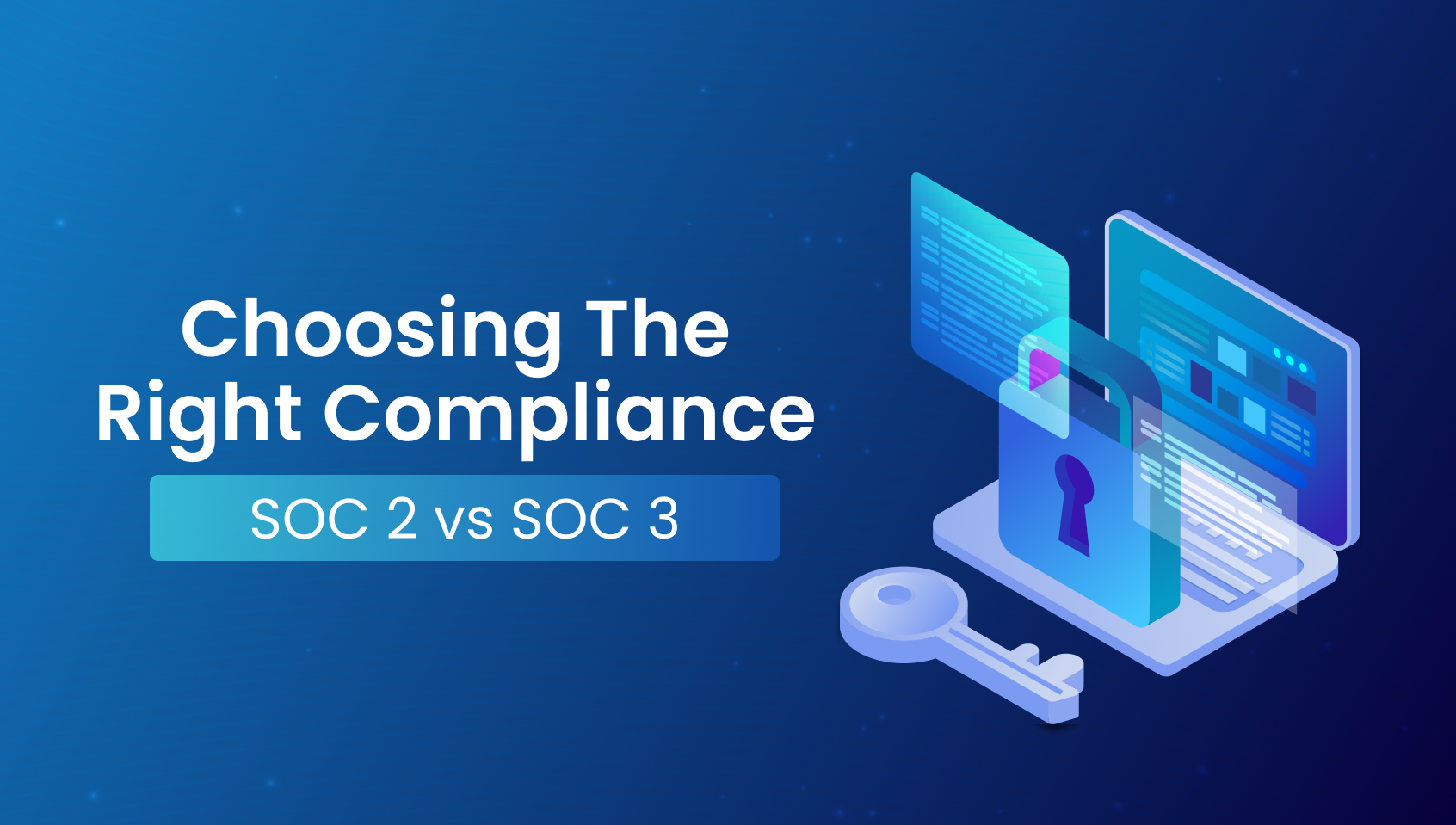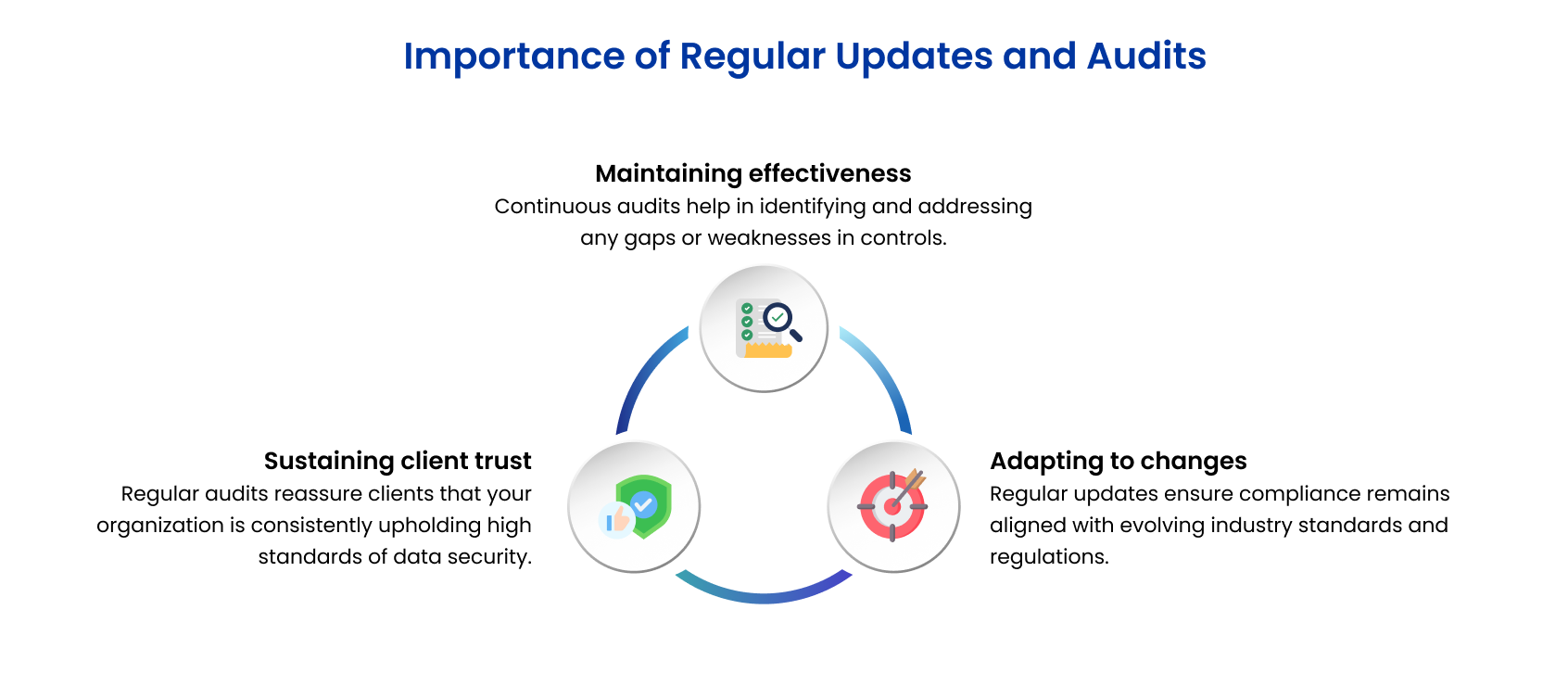
In an era where data is often described as the new oil, the importance of safeguarding this valuable resource cannot be overstated. Every day, organizations across the globe collect, process, and store vast amounts of sensitive information. Whether it’s customer data, financial records, or intellectual property, the stakes are high. A single breach can not only tarnish a company's reputation but also lead to significant financial losses and legal consequences.
As the digital landscape continues to expand, so does the complexity of managing and protecting data. This is where compliance standards like SOC 2 and SOC 3 come into play. Developed by the American Institute of Certified Public Accountants (AICPA), these reports are designed to help organizations demonstrate their commitment to data security, integrity, and privacy. But with two similar-sounding standards, how do you know which one is right for your business?
SOC 2 and SOC 3, while related, serve distinct purposes and cater to different audiences. SOC 2 is often viewed as the go-to report for companies that need to provide detailed assurance to stakeholders about their internal controls. On the other hand, SOC 3 is a more general, user-friendly report aimed at public distribution.
In this article, we will break down the key differences between SOC 2 and SOC 3, guiding you through the nuances of each standard. By the end, you'll have a clear understanding of which compliance framework aligns best with your organization's needs and how to leverage these reports to build trust with your clients and partners. Whether you're a tech startup, a financial institution, or a healthcare provider, understanding SOC 2 and SOC 3 is crucial in today’s data-driven world.
What is SOC 2?
SOC 2, or System and Organization Controls 2, is an auditing standard developed by the American Institute of Certified Public Accountants (AICPA). It is specifically designed for service providers that handle customer data, ensuring they maintain rigorous controls to protect the privacy, security, and integrity of that data. Unlike SOC 1, which focuses on financial reporting, SOC 2 is all about data security and the internal controls an organization has in place to safeguard information.
SOC 2 reports are built around five core Trust Service Criteria (TSC):
- Security: Ensures the system is protected against unauthorized access, both physical and logical.
- Availability: Verifies that the system is available for operation and use as committed or agreed upon.
- Processing Integrity: Ensures that system processing is complete, valid, accurate, timely, and authorized.
- Confidentiality: Confirms that information designated as confidential is protected according to the organization’s commitments.
- Privacy: Ensures that personal information is collected, used, retained, disclosed, and disposed of in conformity with the commitments in the entity’s privacy notice.
SOC 2 reports come in two types:
- Type I: This report describes an organization's systems and assesses whether the design of specified controls meets the relevant trust principles as of a point in time.
- Type II: This report not only assesses the design of controls but also evaluates the operating effectiveness of these controls over a specified period, typically six months or more.
SOC 2 compliance is essential for any organization that manages data on behalf of its customers, particularly in industries like cloud computing, SaaS, healthcare, finance, and technology services. Achieving SOC 2 compliance demonstrates a company’s commitment to data security, making it a crucial component for building trust with clients, partners, and regulators.
What is SOC 3?
SOC 3, or System and Organization Controls 3, is an auditing standard closely related to SOC 2, but with a significant difference in its purpose and audience. Like SOC 2, SOC 3 is also developed by the American Institute of Certified Public Accountants (AICPA) and focuses on the Trust Service Criteria: Security, Availability, Processing Integrity, Confidentiality, and Privacy. However, while SOC 2 reports are detailed and technical, intended for a specific audience with a deep interest in the inner workings of an organization’s controls, SOC 3 is designed to be a more general, high-level summary that is suitable for public distribution.
SOC 3 reports provide a summary of the auditor's opinion on whether the organization has met the trust service criteria without delving into the detailed descriptions of controls and their testing that are characteristic of SOC 2 reports. This makes SOC 3 ideal for organizations that want to publicly demonstrate their commitment to security and data protection without revealing sensitive details about their internal processes.
Comparison with SOC 2:
- Content and Depth: SOC 2 reports are comprehensive and include detailed descriptions of controls, how they are implemented, and the results of testing these controls. SOC 3, by contrast, is a condensed version that omits the granular details, offering instead a broader overview.
- Audience: SOC 2 reports are typically shared with stakeholders such as customers, regulators, or partners who require in-depth assurance. SOC 3 is intended for a wider audience, including potential customers and the general public, making it suitable for marketing purposes.
Public Availability: SOC 3 reports are generally available to the public, often published on a company’s website or shared freely with anyone interested. This openness makes SOC 3 an effective tool for companies seeking to build trust and credibility in a broader market.
Who Benefits from SOC 3 Compliance? SOC 3 compliance is particularly beneficial for companies that want to publicly demonstrate their adherence to strong security and privacy practices without disclosing the intricate details of their controls. This includes organizations in industries such as cloud computing, software-as-a-service (SaaS), and other sectors where data security is a critical selling point. By obtaining a SOC 3 report, these companies can reassure potential customers and partners of their commitment to data protection, ultimately enhancing their market reputation.

Choosing the Right Compliance Standard for Your Organization
Selecting between SOC 2 and SOC 3 compliance depends largely on your organization’s industry, the specific needs of your clients, and your overarching business objectives. Understanding these factors will help you make an informed decision about which standard—or combination of standards—is right for you.
Considerations Based on Industry, Client Requirements, and Business Objectives:
- Industry: If your organization operates in a highly regulated industry such as finance, healthcare, or technology, where data security and privacy are paramount, SOC 2 compliance is likely essential. It provides the detailed assurances needed to satisfy regulatory bodies and business partners.
- Client Requirements: Some clients may specifically request SOC 2 reports, particularly if they need to conduct a thorough review of your data security practices. If your clients are data-sensitive and require in-depth understanding, SOC 2 is the appropriate choice.
- Business Objectives: If your primary goal is to establish public trust and demonstrate your commitment to data security broadly without sharing detailed internal processes, SOC 3 is a better fit. It allows you to communicate your security posture to a wide audience, including potential clients, without disclosing sensitive operational details.
When to Choose SOC 2:
Opt for SOC 2 when your business needs to provide detailed, technical information about your data security controls to clients, auditors, or regulatory bodies. SOC 2 is particularly suited for organizations handling sensitive customer data that require rigorous security assurances.
When to Choose SOC 3:
Choose SOC 3 if your goal is to publicly showcase your organization’s adherence to strong security practices without revealing proprietary details. SOC 3 is ideal for marketing purposes and establishing credibility with a broad audience.
Potential for Needing Both:
Some organizations may benefit from both SOC 2 and SOC 3 reports. For instance, you might use SOC 2 to meet the specific requirements of clients and regulators, while leveraging SOC 3 to communicate your commitment to security to the general public. This dual approach can help you build trust across all stakeholder groups, ensuring you meet both detailed compliance needs and broader reputational goals.

Benefits of SOC 2 and SOC 3 Compliance
Achieving SOC 2 and SOC 3 compliance offers several key benefits that can significantly impact your organization’s success.
- Enhanced Customer Trust and Confidence: Both SOC 2 and SOC 3 reports serve as independent validations of your organization’s commitment to data security and privacy. By demonstrating that your controls meet rigorous standards, you build trust with clients, partners, and stakeholders. This transparency reassures customers that their data is in safe hands, fostering long-term relationships and loyalty.
- Competitive Advantage in the Marketplace: In a crowded and competitive market, SOC 2 and SOC 3 compliance can set your organization apart. Having these certifications signals to potential clients that you prioritize security and have the necessary measures in place to protect their data. This can be a decisive factor when clients are choosing between service providers, giving you an edge over competitors without such credentials.
- Streamlined Operations and Risk Management: The process of achieving SOC 2 and SOC 3 compliance involves a thorough review and optimization of your internal controls and processes. This not only enhances your security posture but also streamlines operations by identifying and mitigating potential risks. By proactively managing risks, your organization can reduce the likelihood of costly data breaches and ensure smoother, more efficient operations.

In a world where data security is paramount, SOC 2 and SOC 3 offer essential frameworks for demonstrating your organization’s commitment to protecting sensitive information. SOC 2 provides detailed, technical assurance for clients and regulators, while SOC 3 offers a high-level, public-facing overview.
Choosing the right standard is a strategic decision that should align with your business goals and industry requirements. Whether you opt for the depth of SOC 2 or the broad appeal of SOC 3, both standards help build trust and secure your competitive edge.
Now is the time to assess your data security practices and pursue the appropriate compliance standard, ensuring your organization is not only protected but also positioned as a leader in trust and security.

